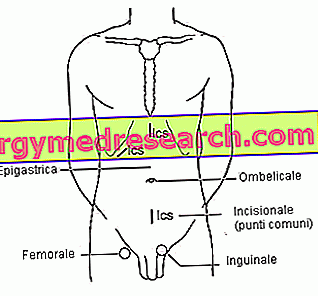Related articles: Imperfect osteogenesis
Definition
Imperfect osteogenesis includes a group of genetic diseases characterized by bone fragility and skeletal deformation of varying severity. Currently, based on radiographic features and molecular genetic analysis, we distinguish fifteen different types.
The main forms of imperfect osteogenesis are 4 (types I-IV); types I and IV are transmitted in an autosomal dominant manner, while types II and III are transmitted in an autosomal recessive manner. The other forms are rather rare.
In 95% of the cases, the origin is attributable to mutations of the COL1A1 and COL1A2 genes (coding for the alpha-1 and alpha-2 chains of type I collagen, respectively).
Most common symptoms and signs *
- Bone pain
- Articolar pains
- Pains of growth
- Muscle pains
- Bruising
- Bone fractures
- Hydrops Fetal
- hyperkyphosis
- hyperlordosis
- Joint hypermobility
- Hearing loss
- macrocephaly
- Fetal death
- Osteopenia
- Carinated breast
- Growth delay
- Funnel chest
Further indications
Imperfect osteogenesis occurs with extremely variable clinical pictures.
Generally, this condition is characterized by an increase in skeletal fragility, a decrease in bone mass and a predisposition to multiple bone fractures, even in the absence of trauma.
In some cases, imperfect osteogenesis is fatal during intrauterine life or in the perinatal period (during the first days or weeks of life).
Other times, the disease is associated with hearing loss, imperfect dentinogenesis (characterized by brownish-gray teeth that tend to break easily) and blue sclera (due to a deficiency in the connective tissue that allows the underlying vessels to be visible) in transparency).
The symptomatology in some patients includes musculoskeletal pain, articular hypermobility, curvature of the spine (kyphosis and scoliosis), growth retardation, progressive deformation of the limbs and short stature. Furthermore, macrocephaly with triangular facies, decrease in cranial density and deformity of the chest are possible.
The diagnosis is usually clinical, but there are no standardized criteria. When the condition is not clear, it is possible to resort to radiographic features and molecular genetic analysis, with a search for mutations in the genes associated with imperfect osteogenesis, identified to date.
Depending on the case, the treatment may include the administration of growth hormone and the use of bisphosphonates with strong contrast properties on bone absorption. Orthopedic surgery and physiotherapy help prevent fractures and improve motor function.

Imperfect Osteogenesis: note the blue color of the sclerae and the bone deformations that characterize the disease. From wikipedia.org



